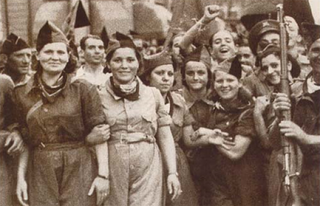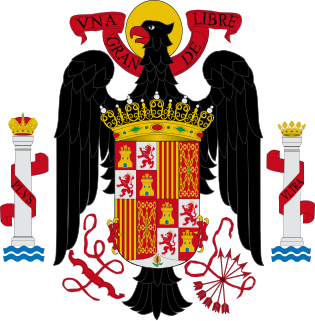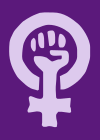The Contagious Diseases Acts were originally passed by the Parliament of the United Kingdom in 1864, with alterations and editions made in 1866 and 1869. In 1862, a committee was established to inquire into venereal disease in the armed forces. On its recommendation the first Contagious Diseases Act was passed. The legislation allowed police officers to arrest women suspected of being prostitutes in certain ports and army towns. The women were then subjected to compulsory checks for venereal disease. If a woman was declared to be infected, she would be confined in what was known as a lock hospital until she recovered or her sentence finished. The original act only applied to a few selected naval ports and army towns, but by 1869 the acts had been extended to cover eighteen "subjected districts".

Libertarias is a Spanish historical drama made in 1996. It was written and directed by Vicente Aranda.

The practice of prostitution in colonial India was influenced by the policies of British rule in India. During the 19th and 20th centuries the colonial government facilitated, regulated and allowed the existence of prostitution. Not only was prostitution in India affected by the policy of the Governor General of India, it was also influenced by the moral and political beliefs of the British authorities and conflicts and tensions between the British authorities and the Indian populace at large. The colonial government had a profound effect on prostitution in India, both legislatively and socially.

The Chamberlain–Kahn Act of 1918 is a U.S. federal law passed on July 9, 1918, by the 65th United States Congress. The law implemented a public health program that came to be known as the American Plan, whose stated goal was to combat the spread of venereal disease.
Women on the Nationalist side of the Spanish Civil War came from a culture and historical background that traditionally saw the role of women being defined by the Catholic Church. Prior to the founding of the Second Republic, women had few rights and were often under the control of their fathers or husbands. Their role in the state was to be a good mother, and the framework of the state supported that. They had few employment opportunities, were largely illiterate and their children often died during childbirth. Political activism was often based around Catholic organized women's groups. The Dictatorship of Primo de Rivera saw women enlisted on electoral rolls for the first time, as well as being allowed to run for municipal political office and appointed to the national congress by 1927.
Feminists were involved in the Spanish Civil War, although the conditions underlying their involvement pre-dated the Second Republic.

Milicianas fought in the Spanish Civil War. They came from a culture with iconic fighters, and where women had been recently empowered through direct political engagement in political organizations and labor unions. The Dictatorship of Primo de Rivera saw women take more to the streets to protest and riot, though their actions were dismissed by male political leaders. The creation of the Second Spanish Republic led to an environment encouraging active political participation in broader Spanish society, and ultimately served to assist many women in their decision to head to the front, as the Government expanded rights for women, including the right to vote, divorce, go to school and stand for election.
Women in Federación Anarquista Ibérica (FAI) in the Spanish Civil War were often only addressed because of what they appeared to be able to offer male FAI leadership in terms of attracting adept fighters and politicians.
Women in the Confederación Nacional del Trabajo in the Spanish Civil War period faced many specific challenges owing to a long history of sex-based discrimination in the Spanish anarcho-syndalicalism movement and in the Confederación Nacional del Trabajo (CNT). From early in its history, there was a belief that a woman's primary role was to reproduce and that only men should be in the workforce. Few women were involved in the early efforts inside Spain, and internationally there were active attempts to keep women out. The formal creation of the CNT in 1910 did little to change this. Anarchist men inside the CNT actively tried to keep women out to avoid diminishing their own importance.
Women in the Spanish Socialist Workers' Party in the Spanish Civil War were few in number, mainly as a result of the Spanish Socialist Workers' Party (PSOE)'s resistance to women's rights. The party had opposed the women's rights movement, seeing it as a bourgeois endeavor that interfered with their ability to work for labor rights. Despite warnings from prominent women about the problems related to this position, they re-affirmed it several times in the period prior to the Dictatorship of Primo de Rivera.
Motherhood in the Spanish Civil War period was a political concept around the idea of women's involvement in support of the state. The blending of definitions of motherhood and womanhood had been occurring in Spain long before this though, with a woman's role being defined as being in the house part of a biological determinism perspective supported by male run institutions in Spain, including the Government and the Catholic Church.
Women in the Communist Party of Spain (PCE) in the Spanish Civil War were highly active, the most visible figure in the movement being Dolores Ibárruri, who joined in its early years. The Dictatorship of Primo de Rivera pushed the group underground, where they had to meet clandestinely around their public face, the football club Oriente FC.
Women in the Popular Front in the Spanish Civil War were part of a broad leftist coalition founded ahead of the 1936 Spanish general elections. The Second Spanish Republic represented a changing cultural and political landscape in which women's political organizations could flourish for the first time. It failed to empower women completely, as they were often locked out of governance roles and positions in political organizations. Many organizations continued to discriminate against women, as Marxist ideology did not see them as a unique group with special needs but as part of larger class grouping in which class equality needed to be prioritized.
Women in modern pre-Second Republic Spain were marginalized by society, with very few legal rights. Pre-1900s, the most important feminists were in Spain were Teresa Claramunt and Teresa Mañe, who drew inspiration from foreign feminists. Prior to the 1900, literacy rates for women were at 10%. Education for women was primarily being pushed by freethinkers. This period saw low percentages of women in the workforce, with industrialization having failed to bring women into the labor market. The most female industry with the greatest women's led labor movement was the tobacco industry.
Women in the Second Republic period were formally allowed to enter the public sphere for the first time in Spanish cultural life, where they had a number of rights they had lacked before including the right to vote, divorce and access to higher education. The Second Spanish Republic had three elections, ones in 1931, 1933 and 1936. Women were able to run in all three and vote in the last two. Clara Campoamor Rodríguez, Victoria Kent Siano and Margarita Nelken y Mansbergen were the most important women to emerge in this period.
Women in the Spanish Civil War saw the conflict start on 17 July 1936. The war would impact women's everyday lives. Feminist solutions to problems of women in this period often took an individualistic approach. For women of the Second Republic, by close of the Civil War their efforts for liberation would fail.
Women in Francoist Spain found traditional Catholic Spanish gender roles being imposed on them, in terms of their employment opportunities and role in the family. For Republican women, Francoist Spain was a double loss, as the new regime first took away the limited political power and identities as women which they had won during the Second Spanish Republic (1931-1939), and it secondly forced them back into the confines of their homes. Motherhood would become the primary social function of women in Francoist Spain.

Gender roles in Francoist Spain became more regressive following the end of the Spanish Civil War. Women, who had achieved some degree of liberation during the Second Republic, were forced back into the home. Misogyny and heteronormativity became linchpins in the new fascist Spain, underpinned by Hispanic eugenics. Under this system, anyone who did not adhere to state and religious mandated gender roles and who expressed any deviance from Roman Catholic sexual norms was considered by both church and state to be a sex pervert.
Women in POUM in Francoist Spain were few as many, along with male dominated leadership, were forced into exile following the end of the Spanish Civil War. Those in exile often felt isolated and alone. Those who remained were sometimes sent to prison. POUM women participated in a hunger strike at Madrid's Las Ventas prison in 1946. The group fell by the wayside as Partido Comunista de España became the pre-dominant resistance organization in Spain. The organization finally dissolved during the 1950s in Toulouse, France with its memory kept alive by the wife of its last president, María Teresa Carbone, through the Fundació Andreu Nin.

Prostitution in Francoist Spain (1936–1975) presented the government with a problem. The Nationalist faction in the Spanish Civil War (1936–1939) tolerated the practice, but prostitution was actively opposed by the Catholic Church. During the 1940s, state policy was more tolerant of it, and allowed officially sanctioned brothels to serve the "needs" of men and prevent the spread of sexually transmitted infections (STIs). However, clandestine prostitution was actively suppressed, while its economic causes, which largely involved war orphans and women in dire economic situations, were ignored.





